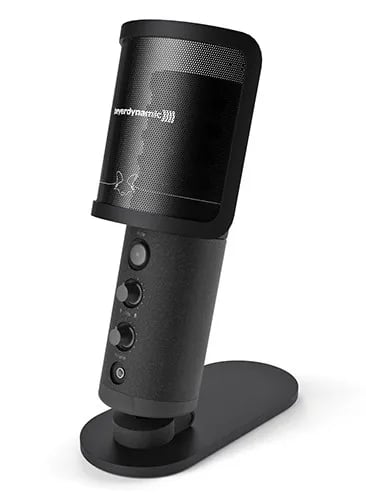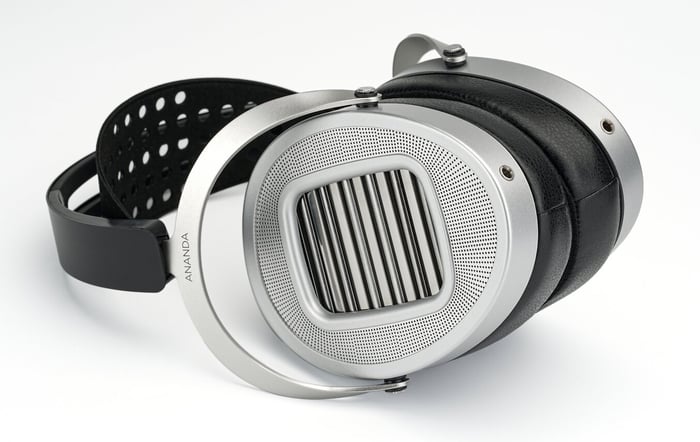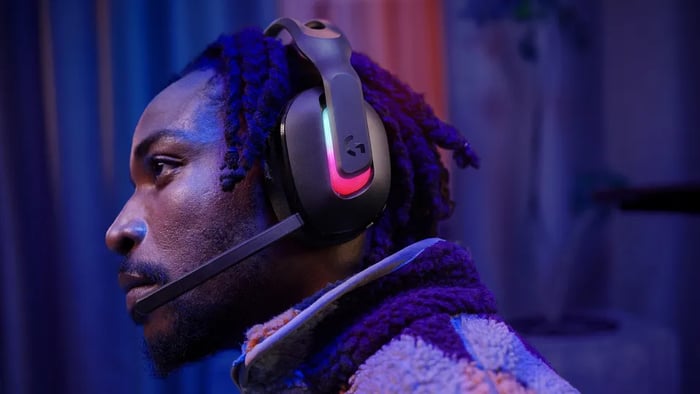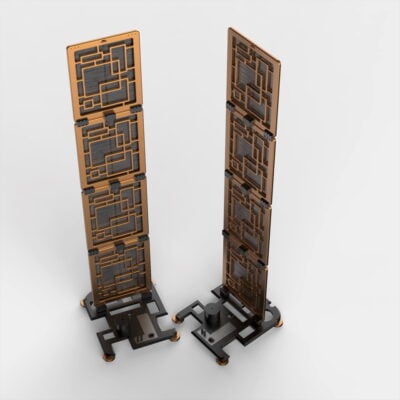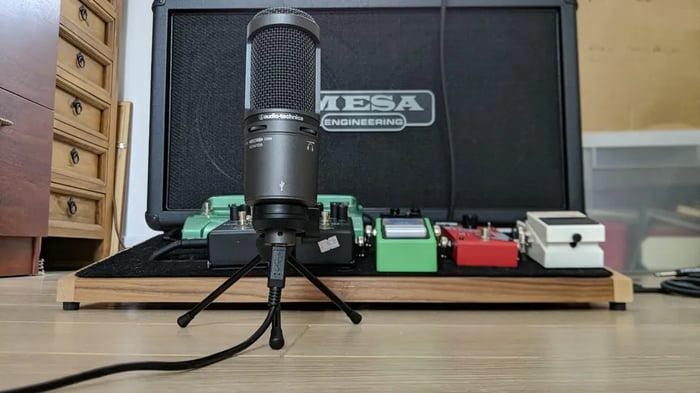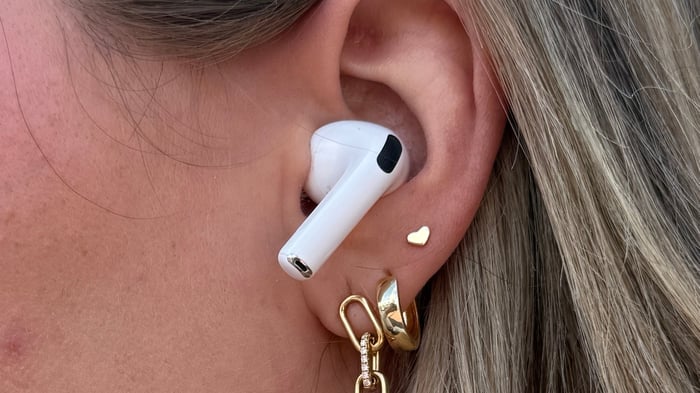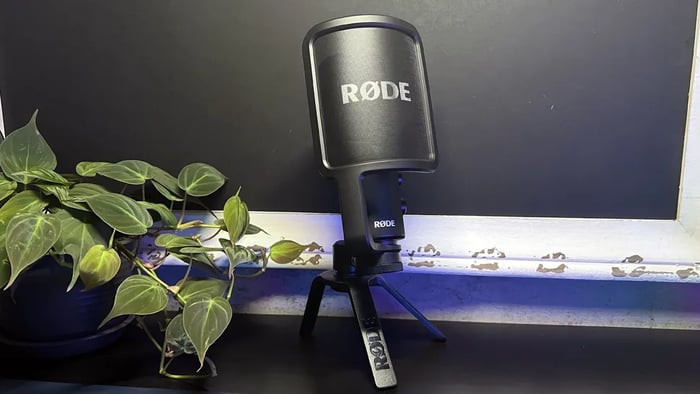
Gaming Microphones: How to Choose? A Detailed Comparison
Gaming Microphones: How to Choose? A Detailed Comparison
Explore the top gaming microphones to amplify your voice with clarity, whether for streaming, chatting, or podcasting.
When it comes to gaming, your headset mic might get the job done, but it rarely captures your voice with the crystal-clear quality you'd hear on a professional broadcast. Upgrading to a dedicated gaming microphone not only sharpens your voice for teammates and viewers but also opens doors for podcasting, music recording, and more.
If you’ve already invested in that slick gaming keyboard and mouse, why not complete your setup with a gaming microphone that truly stands out? No need to dive into complex audio gear either — a free USB port or mic jack is all you need to get started.
Top Gaming Microphones at a Glance
Best Overall: Rode NT-USB+
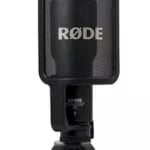
A robust, professional-grade mic with a refined circuit that delivers rich, warm vocals straight out of the box.
Best for Streaming: HyperX QuadCast 2 S
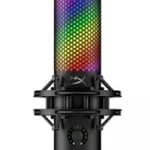
The latest from the iconic QuadCast series, bringing excellent sound, four pickup patterns, and customizable RGB lighting to brighten your stream.
Best for Chatting: HyperX QuadCast S
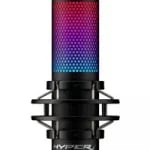
A longtime fan favorite featuring vivid RGB lighting, four polar patterns, and a superb tap-to-mute function.
Best Budget: Logitech Yeti Orb
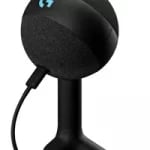
The newer, darker version of the classic Snowball mic, delivering impressive sound quality right out of the box at an affordable price.
Best for Music Recording: Beyerdynamic FOX
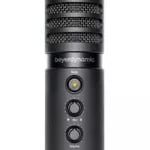
A high-quality USB mic with 96 kHz/24-bit recording, onboard controls, and a sturdy pop shield — perfect for your home studio.
Best for Podcasting: Audio-Technica AT2020USB
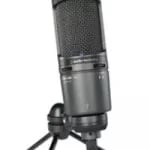
A premium mic with warm, detailed sound and crisp highs, ideal for conversations and narrations.
Deep Dive Into the Best Gaming Microphones
Best Overall: Rode NT-USB+

The Rode NT-USB+ builds on its predecessor's solid professional design with upgraded circuitry, the innovative Revolution preamp tech, and a built-in digital signal processor. Thanks to USB-C connectivity and a plug-and-play setup, you get broadcast-quality vocals with deep lows and minimal noise.
- Sampling Rate: 48 kHz
- Bit Depth: 24-bit
- Frequency Response: 20 Hz–20 kHz
- Polar Pattern: Cardioid
- Cable Length: 3 m
- Connection: USB-C
Pros:
- Durable, well-built
- Comes with a removable pop filter
- Fantastic, rich sound
Cons:
- No mic gain control
- Loud sounds may still clip
The NT-USB+ includes a 3.1-foot USB-C to USB-C cable, a plastic desktop tripod, a removable metal mesh pop filter, and a mount that easily attaches to mic stands or boom arms. The zero-latency headphone output and intuitive mix and headphone volume controls let you monitor yourself perfectly.
What it lacks in onboard gain control, it more than makes up for with clean, warm audio that suits gamers, streamers, and podcasters alike.
This mic reproduces superior vocals with dense lows and very low self-noise, giving broadcast-quality sound in a simple plug-and-play device.
Best for Streaming: HyperX QuadCast 2 S

If you want a microphone that’s as visually striking as it is sonically impressive, the QuadCast 2 S is a streamer’s dream. With 192 kHz/32-bit sampling (some might say overkill!), this mic offers four polar patterns for maximum flexibility and customizable RGB lighting to make your setup pop.
- Sampling Rate: 192 kHz
- Bit Depth: 32-bit
- Frequency Response: 20 Hz–20 kHz
- Polar Patterns: Cardioid, omnidirectional, bidirectional, stereo
- Connection: USB-C, 3.5 mm headphone jack
Pros:
- Ultra-high sampling rate and bit depth
- Removable shock mount
- Tap-to-mute button
- Excellent out-of-the-box sound
Cons:
- 192 kHz/32 bit is over the top for gaming
- Companion software mainly controls lighting
The redesigned shock mount makes detaching the mic a breeze, and its sturdy desk stand is complemented by compatibility with threaded mic arms. The handy multi-function dial on the front lets you adjust gain, monitor volume, and pick your polar pattern easily.
If you want a mic that sounds great and looks even better on stream, this one’s a winner.
Best for Chatting: HyperX QuadCast S
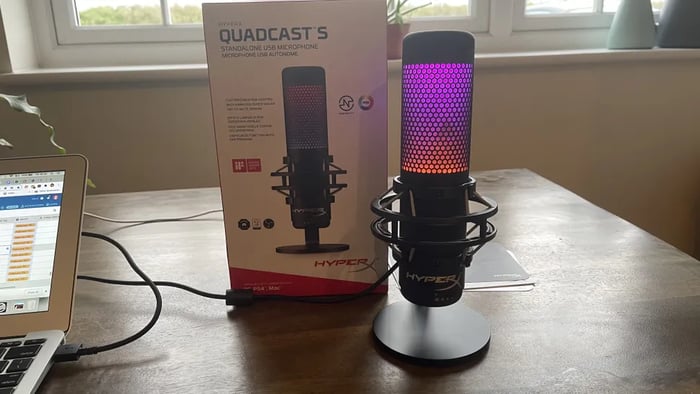
The QuadCast S has been a beloved staple for gamers needing a versatile communication tool. It boasts four polar patterns, an effective suspension mount, and that clever touch-sensitive mute button that eliminates noisy clicks.
- Sampling Rate: 48 kHz
- Bit Depth: 16-bit
- Frequency Response: 20 Hz–20 kHz
- Polar Patterns: Stereo, omnidirectional, cardioid, bidirectional
- Connection: USB-A to USB-C cable
Pros:
- Great shock mount
- Solid build quality
- Four polar patterns
- Crisp and reliable audio
Cons:
- Not a huge leap from original QuadCast
- RGB software could be better
- Not quite studio-grade
While perfect for voice chats and streaming, the 48 kHz/16-bit resolution means it might fall short for podcasters or musicians seeking richer fidelity. If you don’t need four pickup modes, the smaller HyperX DuoCast offers 96 kHz/24-bit recording with similar tap-to-mute functionality.
Best Budget: Logitech Yeti Orb
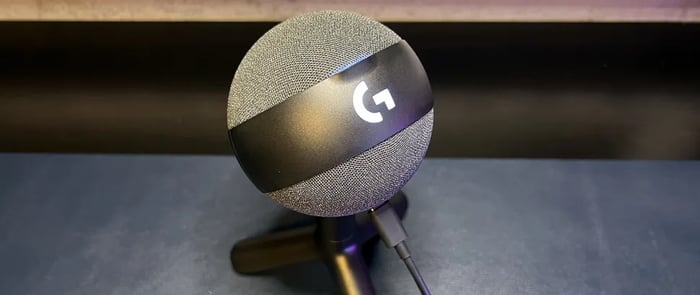
A sleek evolution of the classic Blue Snowball, the Yeti Orb combines affordability and solid sound. It features cardioid polar pattern only, but excels in delivering a warm, clear voice perfect for gaming or casual streaming.
- Sampling Rate: 48 kHz
- Bit Depth: 24-bit
- Frequency Response: 70 Hz–20 kHz
- Connection: USB-C
Pros:
- Great sound quality
- Color-changing recording indicator
- Budget-friendly
- Super simple to use
Cons:
- No onboard controls
- Stand isn’t adjustable
- Requires close placement for best sound
The Yeti Orb shines with its user-friendly design and Logitech Blue VO!CE software suite, offering voice modulation, an equalizer, noise suppression, and fun vocal effects to spice up your streams. Though it lacks physical controls on the mic, the RGB lighting clearly indicates when you’re live, adding a nice touch to your setup.
Best for Music Recording: Beyerdynamic FOX
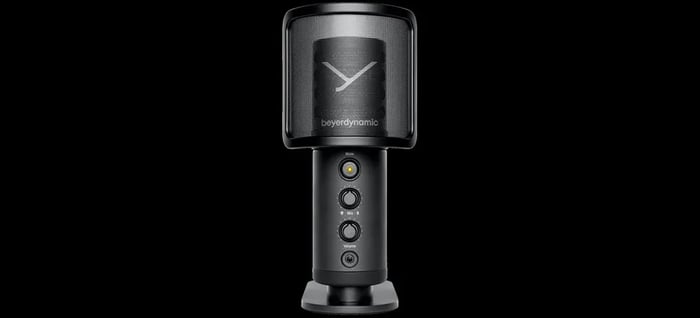
If your gaming microphone needs to double as a music recording tool, look no further than the Beyerdynamic FOX. With 96 kHz/24-bit resolution and studio-quality sound, it’s a compact powerhouse for home studios.
- Sampling Rate: 96 kHz
- Bit Depth: 24-bit
- Frequency Response: 20 Hz–20 kHz
- Polar Pattern: Cardioid
- Cable Length: 1 m
- Connection: USB Type-A
Pros:
- High-resolution audio
- Sleek pop shield design
- Studio-quality mic experience
Cons:
- Headphone preamp prone to damage
- Only cardioid pattern available
- High bit rate less impactful for streaming
Beyerdynamic’s pro audio pedigree shines through in the FOX’s balanced, warm sound. It comes with handy onboard mixing and volume controls plus a headphone jack for zero-latency monitoring. While the preamp can heat up and distort if cranked too high, this feature is invaluable when dialing in the perfect sound.
Best for Podcasting: Audio-Technica AT2020USB
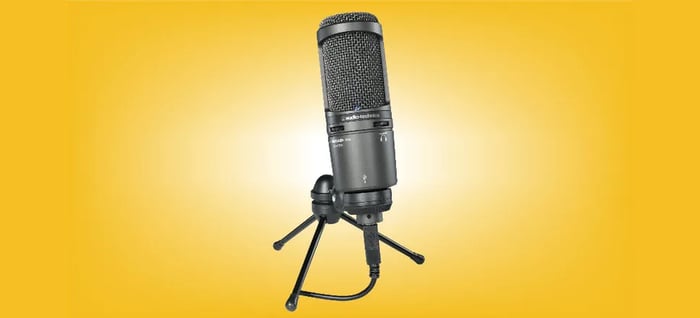
Known for its studio heritage, Audio-Technica AT2020USB delivers warmth and clarity — a great pick for podcasts and vocal recordings.
- Sampling Rate: 44 kHz
- Bit Depth: 16-bit
- Frequency Response: 20 Hz–20 kHz
- Polar Pattern: Cardioid
- Cable Length: 3.1 m
- Connection: USB Type-A
Pros:
- One of the best USB mics for vocal clarity
- Convenient zero-latency monitoring
- Nice sound at a distance
Cons:
- Slightly unstable tripod stand
- Not quite as warm as Beyerdynamic FOX
- Picks up keyboard clicks
Though not bundled with a pop filter or boom arm, these accessories are a worthwhile investment for a steady setup. The AT2020USB shines in capturing detailed vocals with pleasant highs, making it an excellent tool for podcasters seeking affordable, reliable quality.
Other Gaming Microphones We've Tested
Rode PodMic USB Edition
Rode’s popular PodMic now offers USB-C connectivity alongside its traditional XLR input, making it more accessible for gamers and streamers who want dynamic mic quality without extra audio interfaces. It features a cardioid pattern, internal pop filter, built-in swivel mount, 3.5 mm headphone jack, and a handy volume knob for zero-latency monitoring. Just note: it comes without a stand, so you’ll want to grab a boom arm or mic stand.
Quick Tips for Buying a Gaming Microphone
- Polar Pattern: Defines the area around the mic that picks up sound. Many gaming mics feature multiple patterns.
- Cardioid: Most common, ideal for single-person vocals by focusing sound from one direction.
- Bidirectional: Picks up sound from two opposite sides, handy for two-person recordings.
- Omnidirectional: Captures sound from all directions—great for ambient noise but less ideal for gaming.
- USB vs. XLR: USB mics plug straight into your PC, perfect for gaming and casual recording. XLR requires an audio interface but provides greater versatility and quality for pros.
- Built-in Monitoring: Many mics feature headphone jacks for zero-latency monitoring so you can hear yourself live and avoid shouting unnecessarily.
- Frequency Response: Typically 20 Hz–20 kHz covers human hearing. Extended ranges capture deeper lows or higher highs, useful for music more than gaming.
Many gaming microphones come with built-in headphone monitoring to hear your raw voice without delay, preventing you from shouting over background noise.
Whether you’re looking to sound like a pro on your next stream, chat crystal-clear with your squad, or record your latest podcast, the right gaming microphone can transform your audio experience. Which one suits your style best?
FAQ
- What is the advantage of multiple polar patterns on a gaming mic?
Multiple polar patterns let you adapt your mic to different recording situations, from solo streaming to interviews. - Do I need an audio interface for an XLR microphone?
Yes, XLR mics require an audio interface to connect to your PC and convert analog signals to digital. - Is USB-C better than USB-A for gaming mics?
USB-C often supports faster data transfer and modern connectivity but USB-A remains widely compatible. - Can a gaming microphone also be used for music recording?
Some higher-end gaming mics offer studio-quality recording suitable for music, but dedicated studio mics excel further. - Why is zero-latency monitoring important?
It lets you hear yourself in real-time without delay, helping maintain proper voice levels during recording or streaming.
Ready to add some flair to your gaming space? Shop your favorite album cover poster at our store and personalize your gaming den with art that speaks to your passion.
 | DISCOUNTGET 30% OFF*Use code on your next order:
|
* This post may contain affiliate links, meaning we earn a commission if you make a purchase through these links, at no additional cost to you.



